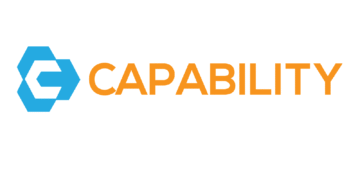Can a single review prevent displacement, protect heritage, and speed approvals for a major project by assessing social effects and impacts?
This guide introduces the essentials of social impact assessments in a clear, practical way for practitioners. It explains how the assessment process analyzes, monitors, and manages intended and unintended effects on livelihoods, cohesion, cultural heritage, and local services.

Why this matters now: housing, energy, and infrastructure projects face higher expectations for equity and transparency in a changing world. SIA goes beyond compliance to cover community well‑being, health, education, and livelihoods in the context of impact assessments for sustainable project development.
Readers will learn core frameworks — IFC Performance Standards, World Bank ESF, IAIA guidance, and the Equator Principles — and practical steps from scoping to monitoring. The guide shows how qualitative narratives and quantitative data combine to make assessments credible and audit‑ready.
Key Takeaways
- Understand SIA fundamentals and their role in U.S. practice.
- Learn frameworks used by lenders and regulators.
- See step‑by‑step methods for scoping, engagement, and mitigation.
- Use mixed methods and modern tools to strengthen evidence.
- Apply practical tips to speed approvals and manage risks.
- Prepare for adaptive monitoring and continuous learning.
Understanding Social Impact Assessment and Why It Matters
Understanding how social impact assessments reveal how projects change communities is essential for fair, resilient planning. A systematic review traces who gains, who loses, and how outcomes shape livelihoods, culture, and cohesion.
What is SIA? From EIA roots to integrated ESIA
Social impact assessment began as an offshoot of Environmental Impact Assessment under the U.S. National Environmental Policy Act in the 1970s.
Modern ESIA gives equal weight to environmental social criteria so planners treat human and ecological risks together.
Protecting communities, cultures, and equity in development
These reviews examine housing, health, education, livelihoods, cultural heritage, and cohesion across near- and long-term horizons.
Guidance from IAIA, IFC Performance Standards, the Equator Principles, and the World Bank ESF helps standardize methods and link projects to sustainable development goals.
Practical stakes include avoiding delays, reducing conflict, and documenting benefits and adverse effects so mitigation and enhancement measures are evidence-based.
How to Conduct a Social Impact Assessment
Begin by mapping the project footprint, the groups affected, and the outcomes you will track over time in your social impact assessment.

Define scope, objectives, and affected groups
Start with clear scope and objectives that set the time horizon and geographic limits. Identify vulnerable populations and other groups likely to feel change.
Stakeholder engagement strategy
Map stakeholders and tailor engagement methods. Use consultations, interviews, and focus groups to surface priorities and local knowledge.
Engagement should produce actionable evidence rather than only feedback. Assign roles for follow-up and transparency.
Baseline data collection
Build a mixed-method baseline using surveys, census records, and participatory techniques. Good data collection ensures future comparisons and credible outcomes.
Identify potential social impacts and measures
Evaluate direct, indirect, and cumulative effects such as jobs, displacement, pressure on health or infrastructure, and distributional outcomes.
Co-design mitigation and enhancement measures—resettlement assistance, local hiring, health access, and heritage protection—and put them in a practical plan with owners and timelines.
Monitoring, reporting, and adaptive management
Establish indicators, routine reporting, and adaptive management to track changes over time. Use simple tools to keep records current and enable course corrections.
Stakeholders, Data, and Methods for Robust Assessments
Effective evaluations begin by centering those most likely to feel change from a project. Early identification of vulnerable groups and indigenous peoples guides culturally appropriate engagement and respects rights such as Free, Prior and Informed Consent where relevant, particularly in the context of social impact assessment.
Centering vulnerable groups and indigenous peoples
Prioritize tailored outreach so voices are heard and recorded. Use translators, local facilitators, and consent forms that match community norms.
Qualitative and quantitative tools
Combine structured surveys with interviews and focus groups to balance numbers and narratives. Community-led insights and participatory mapping add context and credibility.
Ensuring data quality
Build cross-sectional baselines, then track time-series and cohort data to measure lasting change.
Apply clear protocols for data collection, coding, validation, and privacy so findings stay reliable as projects scale. Use platforms that analyze transcripts and documents to surface themes without losing original voices.
Practical tip: Feed results back to stakeholders for review. That strengthens legitimacy and improves the accuracy of impact measurement.
Social Impact Assessment Tools, Templates, and Reporting
Modern platforms turn transcripts, PDFs, and open responses into audit-ready findings for social impact assessment fast. They speed analysis, link quotes to metrics, and sync with BI tools so teams can show verifiable evidence.

Modern platforms for analysis
Choose tools that handle structured and unstructured data, keep version control, support collaboration, and integrate with Google Sheets, Looker Studio, or Power BI.
Working with unstructured data
Use software that extracts themes, sentiment, and contradictions from documents and transcripts. Link findings to source quotes to preserve traceability and support reviews.
Templates, reporting, and bias mitigation
Adopt templates that capture outcomes, indicators, perception measures, and sentiment with branching logic and multilingual support. Map reports to IFC, World Bank ESF, and the SDGs to build clear evidence packs.
Mitigate bias with explicit rubrics, inter-rater checks, and human-in-the-loop review. Add governance: unique IDs, record relationships, and routine data quality checks.
Practical plan: pilot objectives week one, ingest data and set rubrics week two, then review and export reports by weeks three to four. That delivers defensible insights for projects and regulators.
Social impact assessment in practice
Curing theory with cases shows how review work shapes better outcomes for people and places. Real-world projects translate methods into concrete choices that regulators, developers, and communities can act on.
Real-world examples: housing, suburbs, dams, and UBI pilots
Phoenix housing: community-led engagement flagged gentrification risks and produced a community land trust, local hiring quotas, and co-designed green space. Those measures reduced displacement and improved trust.
Melbourne suburb: early work protected First Nations sites, kept remnant bushland, and phased schools and transit to match growth. That alignment cut conflict and sped approvals.
UBI pilots, rural libraries, and master-planned developments used mixed methods to track poverty, gender dynamics, market shifts, and access to health and education. Results linked narratives to indicators to validate claimed outcomes.
Integrating environmental and social dimensions through ESIA
Integrated ESIA treated environmental and social measures as one package. For dam clusters, cumulative reviews coordinated across sites and seasons to weigh displacement, livelihoods, and ecosystem effects.
Tools sped synthesis of meeting notes and transcripts into actionable recommendations. Lessons from each project feed future assessments so portfolios learn and adapt as conditions change.
Conclusion
Strong, rigorous review ties insights to action so teams can close the loop between evidence and delivery.
This guide shows how a practical social impact assessment strengthens projects by centering people, equity, and clear metrics. Follow the process: scoping, stakeholder mapping, engagement, baselines, identifying effects, mitigation, action planning, and adaptive management over time.
Align with IAIA guidance, IFC Performance Standards, the Equator Principles, and the World Bank ESF to keep reviews credible and audit-ready. Integrate environmental and social work through ESIA to support sustainable development while respecting local cultures and livelihoods.
Publish findings, track commitments, and update indicators as conditions change. Apply these steps and tools now to turn insights into measurable change and durable trust across the project lifecycle.
FAQ
What does a social impact assessment involve?
It evaluates how a project or policy affects people, communities, and local services. The process maps affected groups, collects baseline data on well-being and infrastructure, and forecasts direct, indirect, and cumulative effects. Findings guide mitigation, enhancement measures, and a monitoring plan tied to clear roles and timelines.
How do ESIA and SIA differ?
An environmental and social integrated study combines ecological and human dimensions to give a full picture of consequences. A standalone human-centered review focuses on cultural practices, health, livelihoods, and equity. Both use similar tools, but the integrated approach links ecological risks to outcomes for people and places.
Who should be engaged during the evaluation?
Affected residents, local leaders, civil society groups, and rights holders such as indigenous communities must participate. Consultations should include interviews, focus groups, and public meetings. Private sector partners, local authorities, and health or education providers also offer key insights for design and mitigation.
What methods work best for baseline data collection?
Combine household surveys, key-informant interviews, and participatory mapping with administrative records and time-series statistics. Use qualitative narratives to capture cultural and gendered dimensions. Ensure data quality through piloting, training, and clear sampling.
How are risks like displacement and health effects managed?
Prepare mitigation plans that prioritize avoidance first, then minimize and compensate as needed. Health actions include screening, local service strengthening, and emergency response links. For relocation, follow consent protocols, livelihood restoration strategies, and documented resettlement plans.
What monitoring and reporting practices are essential?
Adopt indicators tied to baseline conditions, collect data at defined intervals, and use adaptive management to revise measures. Transparent reporting and third-party audits improve accountability. Use digital platforms for dashboards and for tracking progress against the action plan.
How do teams center vulnerable groups and indigenous peoples?
Design tailored engagement that respects cultural norms and languages, secure free, prior, and informed consent where required, and include specific indicators for equity, gender, and livelihood outcomes. Build capacity within communities to participate in ongoing monitoring.
What tools help analyze unstructured data like transcripts and narratives?
Use qualitative analysis software and human-in-the-loop review to code themes, map sentiments, and extract case studies. Combine these outputs with quantitative indicators to inform mitigation and to produce audit-ready reports aligned with international standards.
Which standards and frameworks should reports align with?
Align reporting to the International Finance Corporation performance standards, World Bank Environmental and Social Framework, and relevant Sustainable Development Goals. Clear alignment supports financing, compliance, and comparability across projects.
How can bias be reduced in the process?
Use mixed methods, diverse data sources, independent reviewers, and participatory validation workshops. Document assumptions and limitations, and apply transparent sampling and analysis protocols to limit systematic errors.
Are there templates or platforms that accelerate work?
Yes. Many consultancies and software providers offer templates for baseline studies, stakeholder registers, and monitoring dashboards. Choose solutions that allow customization, secure data handling, and alignment with donor or lender requirements.
How do you measure long-term outcomes versus short-term effects?
Set short-, medium-, and long-term indicators tied to livelihoods, health, and infrastructure use. Implement time-series or longitudinal tracking and periodic evaluation to capture trends and to inform adaptive management across the project lifecycle.





